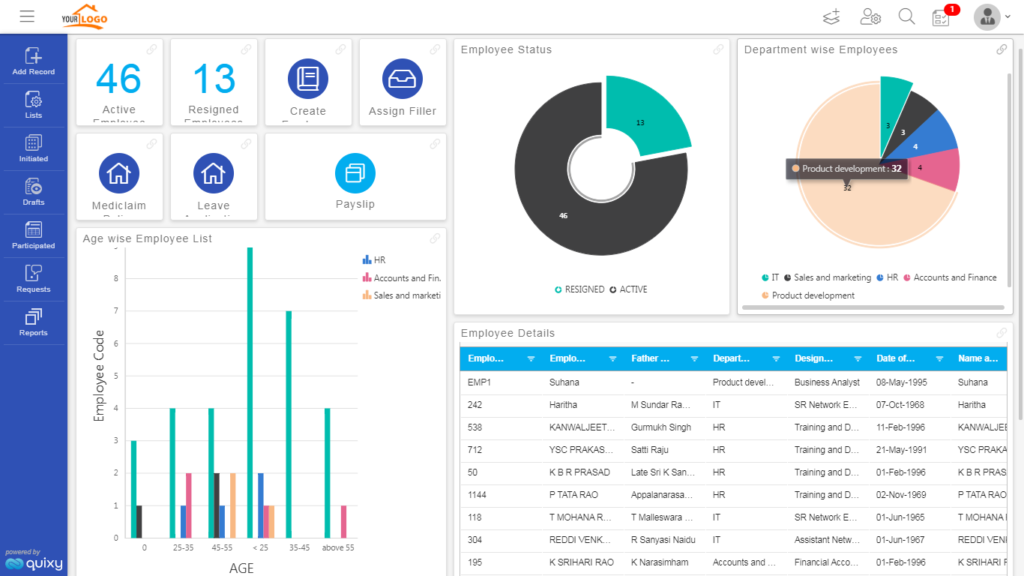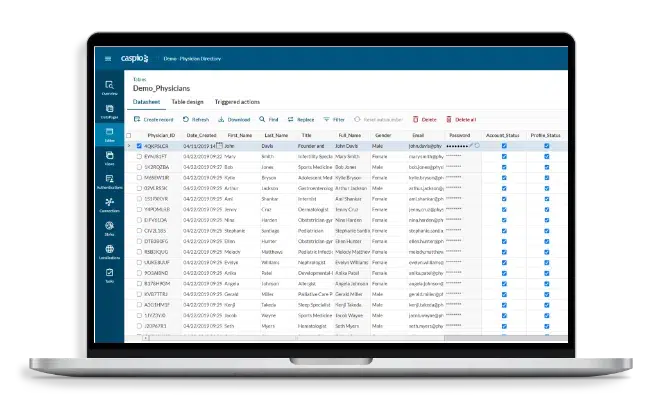Develop Open Platform Databases Quickly with the most effective No-Code Equipment Available
A Comprehensive Guide to Executing Scalable Databases Without the Need for Coding Experience
In the contemporary landscape of data management, the ability to apply scalable databases without coding experience is becoming increasingly vital for organizations of all dimensions. This guide aims to illuminate the procedure, concentrating on straightforward tools and user-friendly interfaces that debunk data source configuration. By analyzing key attributes, efficient techniques for implementation, and ideal practices for recurring monitoring, we will certainly address how also non-technical individuals can with confidence navigate this complex terrain. What are the vital components that can genuinely empower these individuals to leverage scalable data sources effectively? The answers may redefine your technique to data administration.
Understanding Scalable Databases
In the world of modern information administration, scalable databases have become a crucial service for organizations seeking to handle enhancing volumes of information successfully. These databases are created to accommodate growth by permitting the seamless addition of resources, whether through horizontal scaling (adding more makers) or upright scaling (updating existing devices) This adaptability is necessary in today's fast-paced digital landscape, where information is produced at an unmatched rate.
Scalable data sources normally utilize dispersed designs, which make it possible for information to be spread across numerous nodes. This distribution not just boosts efficiency but also provides redundancy, making sure data availability even in case of hardware failings. Scalability can be an important variable for various applications, consisting of shopping platforms, social media sites networks, and big data analytics, where customer demand can rise and fall considerably.
In addition, scalable databases commonly include durable data consistency designs that stabilize efficiency and dependability. Organizations should consider their details needs, such as read and write rates, data integrity, and mistake tolerance when choosing a scalable data source solution. Eventually, comprehending the underlying principles of scalable databases is crucial for businesses intending to grow in an increasingly data-driven globe.
Trick Attributes to Seek
When reviewing scalable data sources, several key attributes are extremely important to ensuring optimal efficiency and integrity. Take into consideration the style of the data source. A distributed architecture can improve scalability by allowing information to be saved throughout several nodes, facilitating smooth data access and handling as demand boosts.
An additional vital function is data dividing, which makes it possible for reliable monitoring of big datasets by separating them right into smaller sized, much more convenient pieces (no-code). This approach not just enhances efficiency but likewise streamlines resource appropriation
In addition, search for durable replication capabilities. This function guarantees information redundancy and high accessibility, minimizing downtime during upkeep or unanticipated failings.
Efficiency surveillance devices are additionally vital, as they provide real-time understandings into system health and operational efficiency, enabling prompt adjustments to maintain optimal performance.

User-Friendly Data Source Equipment
Simplicity is a critical element in the design of straightforward database devices, as it improves ease of access for users with differing degrees of technical proficiency. no-code. These tools focus on intuitive interfaces, allowing users to produce, manage, and inquiry data sources without calling for comprehensive programs understanding
Secret attributes normally include drag-and-drop capability, visual data modeling, and pre-built layouts that streamline the setup process. Such tools typically use assisted tutorials or onboarding processes that promote individual involvement and decrease the knowing curve. In addition, seamless integration with preferred data sources and services ensures that users can quickly import and export information, additionally streamlining procedures.

Additionally, durable assistance and neighborhood sources, such as online forums and documents, improve the individual experience by giving support when required. Overall, easy to use database devices encourage organizations to harness the power of scalable data sources, making information management available straight from the source to every person involved.
Step-by-Step Application Guide
Just how can companies efficiently carry out scalable data sources to fulfill their growing data demands? The process begins with recognizing particular data needs, consisting of the quantity, variety, and rate of information that will certainly be processed. Next, organizations need to examine user-friendly data source devices that offer scalability attributes, such as cloud-based solutions or handled data source solutions.
As soon as the right tool is chosen, the next action includes configuring the database atmosphere. This includes establishing circumstances, specifying customer authorizations, and developing information frameworks that align with business purposes. Organizations ought to then move existing information into the new system, ensuring data integrity and very little disruption to operations.
Post-migration, conducting complete screening is important; this includes performance screening under numerous tons problems to make certain the system can deal with future growth - no-code. Furthermore, it is very important to educate personnel on the data source management user interface to promote smooth use
Best Practices for Management
Effective monitoring of scalable data sources calls for a strategic strategy that prioritizes recurring monitoring and optimization. To accomplish this, companies must execute durable monitoring devices that offer real-time insights right into data source efficiency metrics, such as question action times, resource use, and transaction throughput. Regularly assessing these metrics can assist identify bottlenecks and locations for renovation.

Normal backups and disaster healing plans are necessary to secure data stability and schedule. Establishing a regular for testing these back-ups will guarantee a reliable recovery process in instance of an unexpected failing.
Moreover, efficiency tuning need to be a constant process. Changing indexing methods, enhancing questions, and scaling resourcesâEUR" whether vertically or horizontallyâEUR" will certainly aid preserve ideal performance as usage needs develop.
Last but not least, promoting a society of understanding sharing among employee will enable continual discovering and adjustment, making certain that the administration of scalable data sources stays reliable and effective with time.
Final Thought
Finally, the application of scalable databases can be properly accomplished without coding competence via the application of intuitive interfaces and straightforward devices. By sticking to the laid out methods for configuration, information migration, and performance testing, people can browse the complexities of data source administration easily. Stressing best techniques for ongoing maintenance and collaboration further improves the capability to manage scalable databases effectively in a quickly developing data-driven setting.
In the modern landscape of data management, the capability advice to implement scalable databases without coding competence is becoming increasingly crucial for companies of all dimensions.In the realm of modern-day information management, scalable data sources have actually emerged as an important remedy for organizations looking for to handle increasing volumes of info successfully.Moreover, scalable databases frequently include durable information consistency models that balance performance and reliability.How can companies successfully execute scalable databases to satisfy their expanding data requirements? Next, organizations ought to evaluate user-friendly data source tools that provide scalability attributes, such as cloud-based options or managed database services.